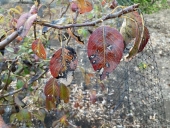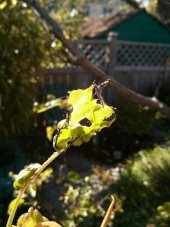Cole Tyler wrote:Sorry I don't have any advice, but I am curious as to what, if any practices you used once you determined the extent of the damage being done? Did you cut the trees down to a stump in order for the roots to survive? Does that even work?
I did absolutely nothing except observe and Google to try to figure out what was happening. I think you can do more harm than good if you don't know what you are trying to treat and I didn't know. Also I'm of a mind that if I have to work too hard to keep something alive, then it's probably not a plant I need on my property. Though I like to understand what's going on so if it's a simple remedy or I made some kind of avoidable mistake.
The rootstocks of all of them must be resistant to whatever it is so when the tops started dying, the roots immediately started putting energy into sprouting and those sprouts are a few feet tall at the moment and looking healthy.
Cole Tyler wrote:
A slight positive though, that only one example of each type has been hit by major problems and others survived!? Surely your diversity of planting over the last 7 years is beneficial.
You know, that is a good point! Thanks for the bright side! 😁







